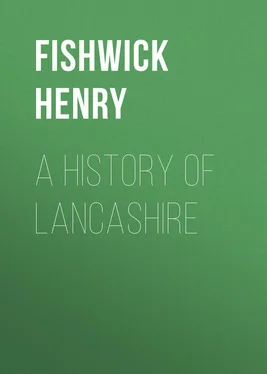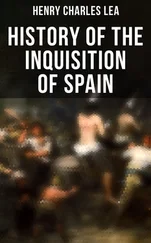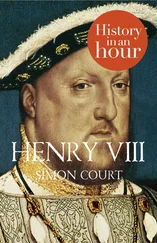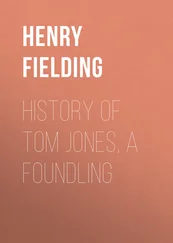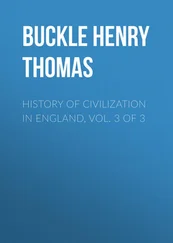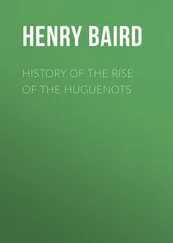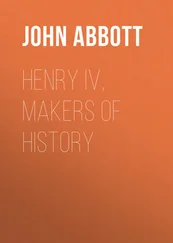Henry Fishwick - A History of Lancashire
Здесь есть возможность читать онлайн «Henry Fishwick - A History of Lancashire» — ознакомительный отрывок электронной книги совершенно бесплатно, а после прочтения отрывка купить полную версию. В некоторых случаях можно слушать аудио, скачать через торрент в формате fb2 и присутствует краткое содержание. Жанр: foreign_antique, foreign_prose, на английском языке. Описание произведения, (предисловие) а так же отзывы посетителей доступны на портале библиотеки ЛибКат.
- Название:A History of Lancashire
- Автор:
- Жанр:
- Год:неизвестен
- ISBN:нет данных
- Рейтинг книги:4 / 5. Голосов: 1
-
Избранное:Добавить в избранное
- Отзывы:
-
Ваша оценка:
- 80
- 1
- 2
- 3
- 4
- 5
A History of Lancashire: краткое содержание, описание и аннотация
Предлагаем к чтению аннотацию, описание, краткое содержание или предисловие (зависит от того, что написал сам автор книги «A History of Lancashire»). Если вы не нашли необходимую информацию о книге — напишите в комментариях, мы постараемся отыскать её.
A History of Lancashire — читать онлайн ознакомительный отрывок
Ниже представлен текст книги, разбитый по страницам. Система сохранения места последней прочитанной страницы, позволяет с удобством читать онлайн бесплатно книгу «A History of Lancashire», без необходимости каждый раз заново искать на чём Вы остановились. Поставьте закладку, и сможете в любой момент перейти на страницу, на которой закончили чтение.
Интервал:
Закладка:
The number of miscellaneous Roman articles which have been found at Ribchester is considerable. In 1884, just outside one of the gateways leading to the camp, a massive gold brooch was found; its weight is 373 grains, and it is in the shape of a harp, measuring 2 inches in length. Roman brooches of gold are very rarely met with.
In making graves in the churchyard from time to time small articles have been found; and in the Vicarage garden, almost every time the soil is turned, fragments of Samian pottery, etc., are brought to light.
These various finds have, perhaps, given rise to the local tradition that:
It is written upon a wall in Rome:
Ribchester is as rich as any town in Christendom.
But much of old Ribchester is lost through the shifting of the bed of the river, which formed one side of the castrum .
From Ribchester issued five roads: (i.) To Yorkshire through Chadburn; (ii.) to Manchester; (iii.) to Morecambe Bay through the Fylde; (iv.) to Lancaster, joining the main road at Galgate; (v.) to Westmorland viâ Overborough.
The road to Yorkshire passed through Langho, crossed the Calder near a place called “Potter’s Ford,” and leaving Clitheroe on the east, went over the rising ground to Chadburn and over the Yorkshire border to Skipton. Roman coins have been found at Langho, 29 29 Lanc. and Ches. Hist. Soc. , xxv. 161.
and also the remains of a rectangular building 70 feet square, which is believed to have been a small camp; its site is still known as “Castle Holme.” 30 30 Whitaker’s “History of Whalley,” ii. 19.
Between Chadburn and Worsthorne, in 1788, nearly 1,000 silver denarii of the Higher Empire were found in an urn dug up by some workmen. 31 31 Baines’ “History of Lancashire” (second edition), ii. 24.
The road through the Fylde district was no doubt made to connect Ribchester with the Portus Sestantiorum (the Haven of the Sestantii), the exact site of which has never been satisfactorily proved, but it was probably near the mouth of the Wyre. The agger is only traceable along bits of the route from Ribchester, but it appears at “Stubbin Nook,” and, after passing Pedder House, becomes identical with what is still called Watling Street; it then crosses Fulwood Moor near Preston, and goes on to Kirkham, Marton Mere, and Poulton–le–Fylde. The late John Just, in 1850, made a careful survey of that portion of the road; he thus describes it: “Within a mile of the town of Poulton are seen the first indications of a Roman road… But having got on to the high ground and to a part of the flats of the Fylde district we meet with striking remains of a road on the turfy ground where it has been piled up in an immense agger… Across this the line is very distinct… On the higher ground the whole of the line has been obliterated … until we again detect it in a low hollow towards Weeton Moss… Here is an immense embankment of several yards in height, its base standing in the water… The line hence directs itself up the rising ground to Plumpton; … from hence it directs its course to the windmill on the high ground between Weeton Moss and Kirkham, which there opens to the view. Near the windmill the road forms an angle, and thence joins the public road in a long–continuous straight line forwards towards Kirkham… About midway, within the long town of Kirkham, the line of the Roman roads falls in with Main Street, and continues up to the windmill at the top of the town. Nearly the whole length of the long street of Kirkham is upon the Roman road.” 32 32 Lanc. and Ches. Hist. Soc. , iii. 3.
At Kirkham the Romans left many traces: amulets, axes, ivory needles, urns filled with calcined bones, lachrymatory urns, and coins, have all at various times been discovered, but the finest relic was the umbo of a shield found at Mill Hill; it is now in the British Museum. It is about 8 inches in diameter, and in its centre is a figure of a man seated, his limbs naked, but wearing on his head a crested helmet. 33 33 Hist. Soc. of Lanc. and Ches. , iii. 60; also Fishwick’s “History of Kirkham,” Chetham Soc. , xcii. 5.
In what was once the bed of Marton Mere, in 1850, the old road was clearly defined; its gravel was 12 yards wide and 2 yards thick; and at Fleetwood, in 1835, at some depth below the sand, a portion of the pavement was found intact. Between Fenny and Rossall Point, on the Wyre Estuary, upwards of four hundred Roman coins were found; their dates varied from A.D. 353 to A.D. 408. Many parts of the Roman road in this district were known as Danes’ Pad. 34 34 Fishwick’s “History of Poulton–le–Fylde,” Chetham Soc. , new series, viii. 4; also civ. 2.
The road from Ribchester to Galgate passed through places called Preston Wives, Writton Stone, Stoney Lane, Windy Arbour, Street Farm, and a little to the north–east of Shireshead joined the road from Walton to Lancaster. Westmorland was approached by a road which, after leaving Ribchester, has not been very clearly traced, but for a great portion of its route it ran through Yorkshire, passing through Slaidburn; it came into Lancashire a few miles south of Ivah, but soon again crossed the border line and re–entered Lancashire, and passed through Tatham to Overborough, the Roman Galacum . Of this place Camden (writing about 1580) says, “that it was formerly a great city upon a large plot of ground, between the Lac and the Lone, and being besieged, was forced to surrender by famine is what the inhabitants told me, who have it by tradition from their ancestors; and certain it is that the place makes proof of its own antiquity by many ancient monuments, inscriptions, chequered pavements, and Roman coins, as also by this modern name, which signifies a burrow.” Although nearly every trace of the Roman occupation has been cleared away, discoveries made since Camden’s time abundantly prove that here was a Roman stronghold. Overborough is in the parish of Tunstall.
There now remains to describe the other Roman road, passing right through Lancashire, in almost a straight line for Warrington, passing Wigan, Preston, and Lancaster on its route to Natland in Westmorland.
This road began at Wilderspool, on the Cheshire side of the Mersey. The exact spot where it crossed the river is unknown, but traces of it are found near Warrington, at Winwick, Haydock, Ashton in Makerfield, and Wigan; from the latter place it continued to Standish, Whittle and Bamber Green, crossed the Ribble at Walton, then passed through some fields formerly known as Great Pathway Fields, Causeway Meadow and Pathway Meadow. From Walton the road went on to Lancaster, through Broughton, Barton Lodge, Brook, Claughton (where was formerly a road called Fleet Street) and Galgate; between Lancaster and Natland all trace of the road has disappeared, and its route is undefined. The remains found on the line of road from Warrington to Wigan are neither numerous nor of special interest.
At Standish many coins have been found, as well as gold rings, of undoubted Roman origin.
At Walton–le–Dale we find clear evidence of the existence of a minor station, between the bends of the Ribble and the Darwen. Here, in 1855, in excavating in a large mound called the Plump, were found the remains of a probably British foundation, upon which was a layer of large boulders, mixed with gravel a foot thick, near to which were lying coins of Antoninus Pius, Domitian, and Vespasian, together with querns, fragments of Samian ware, bricks, tiles, fragments of amphoræ, etc. 35 35 Watkin’s “Roman Lancashire,” p. 203.
In the immediate neighbourhood subsequent excavations brought to light other remains in large quantities, as well as portions of Roman masonry. All the coins found were of the Higher Empire.
Интервал:
Закладка:
Похожие книги на «A History of Lancashire»
Представляем Вашему вниманию похожие книги на «A History of Lancashire» списком для выбора. Мы отобрали схожую по названию и смыслу литературу в надежде предоставить читателям больше вариантов отыскать новые, интересные, ещё непрочитанные произведения.
Обсуждение, отзывы о книге «A History of Lancashire» и просто собственные мнения читателей. Оставьте ваши комментарии, напишите, что Вы думаете о произведении, его смысле или главных героях. Укажите что конкретно понравилось, а что нет, и почему Вы так считаете.
